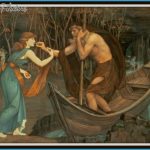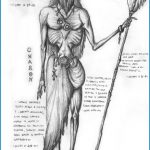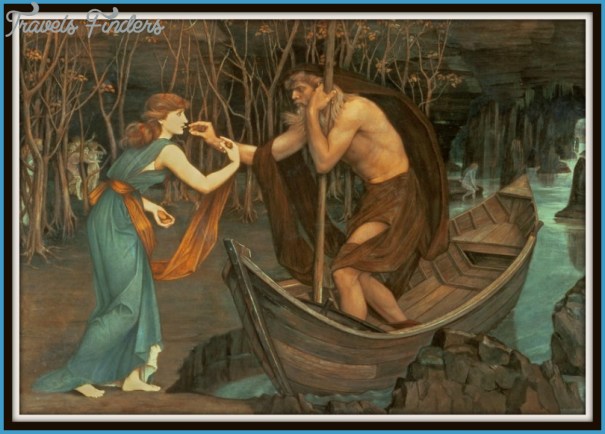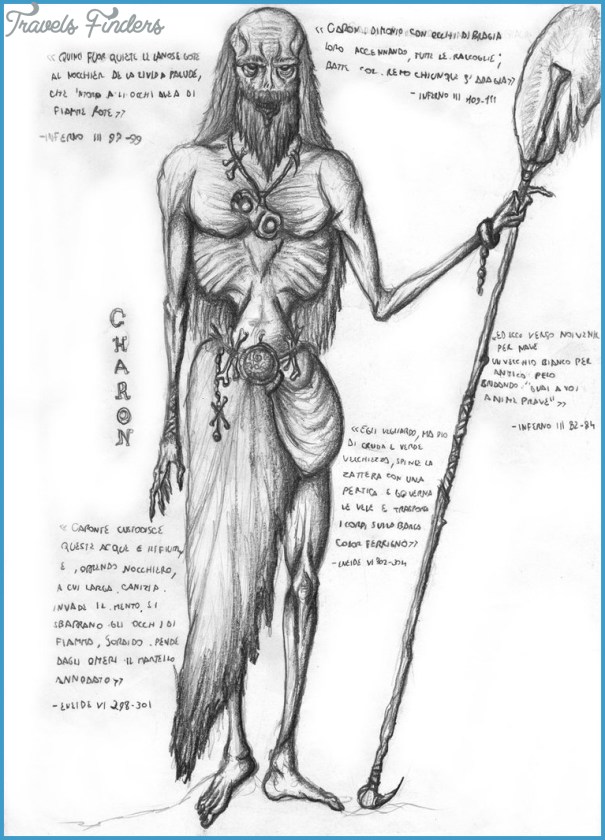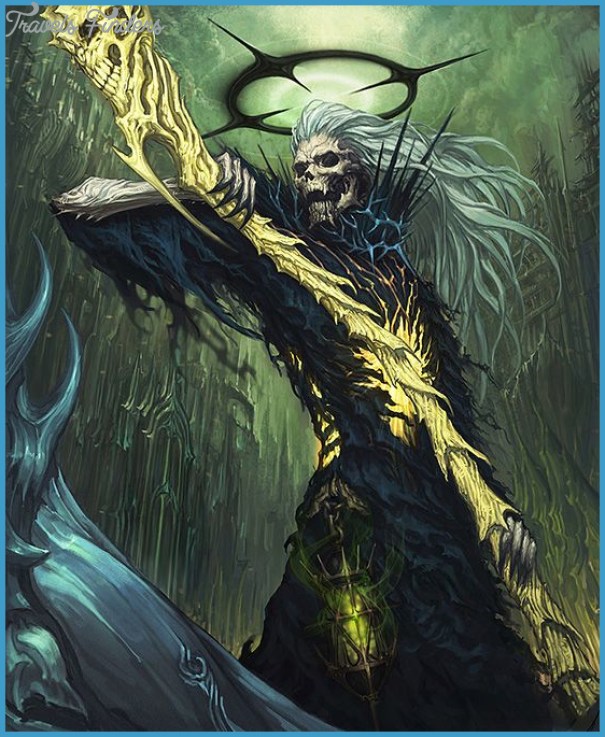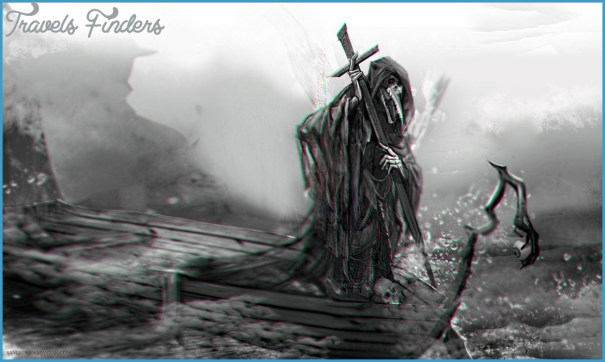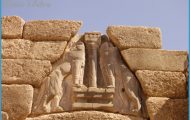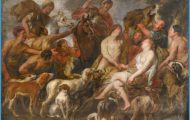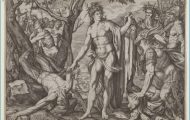In the fifth century bc one of the most memorable of all Hades’ inhabitants is first mentioned: Charon, the ferryman who punts dead souls across the Acheron. Again, local geography may mirror that of Hades: east of Ephyra in antiquity was the Acherousian Lake, into which flowed the Acheron and Cocytus. It has since been drained, but some argue that pilgrims visiting the Necromanteion were rowed across the lake as if they were approaching Hades.
The first surviving work to name Charon (‘Keen-Sighted’) is Euripides’ Alcestis. Anticipating death, Alcestis herself exclaims: I can see him sitting at the oars in his rowing boat in the lake -Charon, the ferryman of the dead. He is sitting at the oars and calling me: “Why are you waiting!
Charon Photo Gallery
Hurry! You are delaying us!” He is calling to me angrily, impatiently.’ Aristophanes provides a further detail. In Frogs, Heracles informs Dionysus that before crossing the Acheron he must pay Charon a fare of two obols. Usually it was half that sum, and from the fifth century bc the dead were regularly buried with an obol (a low-denomination coin) in their mouths. Only the dead of Hermione, the city in the Argolid, were exempt. Strabo explains that they knew a short-cut to Hades, which bypassed the Acheron.
The fifth-century bc artist Polygnotus depicted Charon in a wall-painting which adorned the Lesche (‘Club Room’) at Delphi. Elaborating on Odysseus’ visit to the Underworld, he could not resist including Charon. Pausanias describes: a reedy river, clearly the Acheron, containing outlines of fish so indistinct that you might think them shadows. A boat is on the river with the ferryman at the oars Charon, a man weighted by age. By Charon’s boat on the Acheron’s banks is a large group, including one man who in life had not been dutiful to his father, and is now being strangled by him .
Eternal Punishment
The idea that the virtuous were rewarded in Hades while wrongdoers were appropriately punished became increasingly popular. Supervising these punishments were demi-gods, or daimones (though, unlike demons’, the Greek word has no pejorative overtones). Polygnotus’ painting included:
Eurynomus, whom the guides at Delphi say is one of the daimones of Hades. He devours the flesh from corpses, leaving only bones. His colour is the colour of meat flies, somewhere between blue and black; he is baring his teeth and squatting with a vulture’s skin spread out beneath him
In the Odyssey, Odysseus witnesses some of these punishments: two vultures perch on Tityos (who attempted to rape Leto near Delphi), constantly tearing at his liver; Sisyphus (who tried to cheat death) forever pushes a boulder uphill, which always rolls back down just before reaching the top; while Tantalus, who fed his son Pelops to the gods is:
standing in a pool. The water almost reached his chin. He was thirsty but he could not drink. Whenever the old man bent down and tried to drink the water, it was swallowed up and disappeared, and at his feet was only the dark earth. A god had made all dry. Above his head were tall leafy trees, all thick with fruit – pear trees and pomegranates, apple trees with shining fruit, sweet figs, fat olives. But whenever the old man reached up to seize them in his hands, a wind blew, sweeping them all away towards the massing clouds.
Homer and Hesiod knew the place of punishment as Tartarus, setting it apart from Hades, reserving it specifically for the Titans. Hesiod described its location:
Falling from heaven for nine days and nights, a bronze anvil would reach the earth on the tenth. Similarly a bronze anvil falling from earth for nine days and nights would reach Tartarus on the tenth. A bronze barrier surrounds it. Night spreads in three circlets like a necklace all around it, and high above it grow the roots of earth and the barren sea. It is clammy, at the very limits of the earth.
Elsewhere Hesiod says that anyone who entered Tartarus’ bronze gates and fell into the yawning chasm would plummet for a year, buffeted by winds, before he reached the ground.
By the fourth century bc Tartarus was included within Hades, a place of torture for not only Titans, but mortal criminals, too, a blueprint for Hell and Purgatory. The irredeemable stayed there forever, but each year lesser criminals were granted temporary release so they could beg their victims for mercy. If pardoned, their suffering ended. If not, the felon was led back to torture.
One of our earliest sources to imagine Tartarus, the late sixth- /early fifth-century bc Anacreon admitted his terror: Often I shed tears in fear of Tartarus. The descent to Hades is racked with pain. Only one thing is for certain: once that descent is made, there’s no return.’

